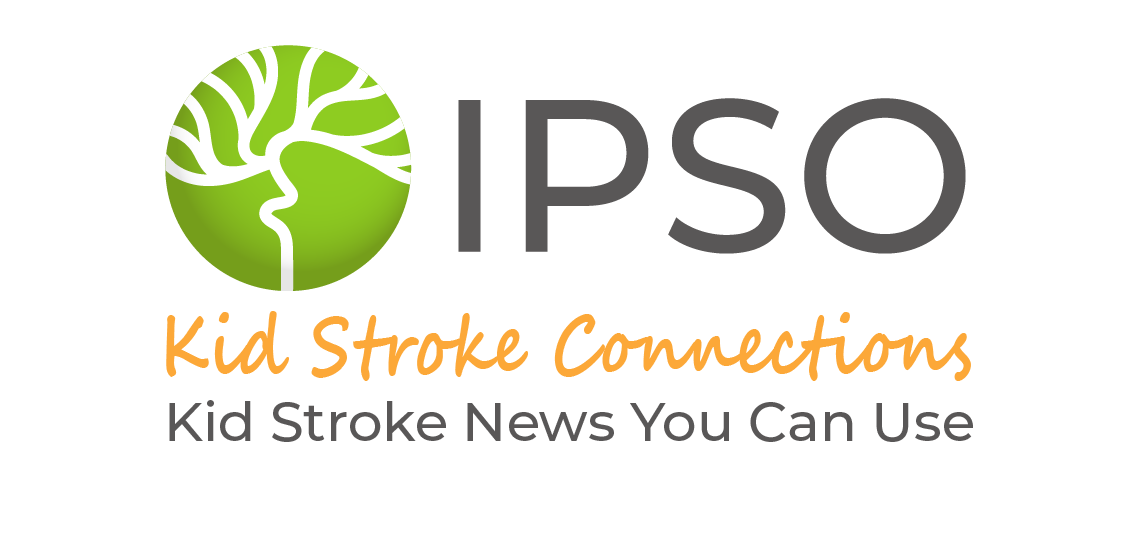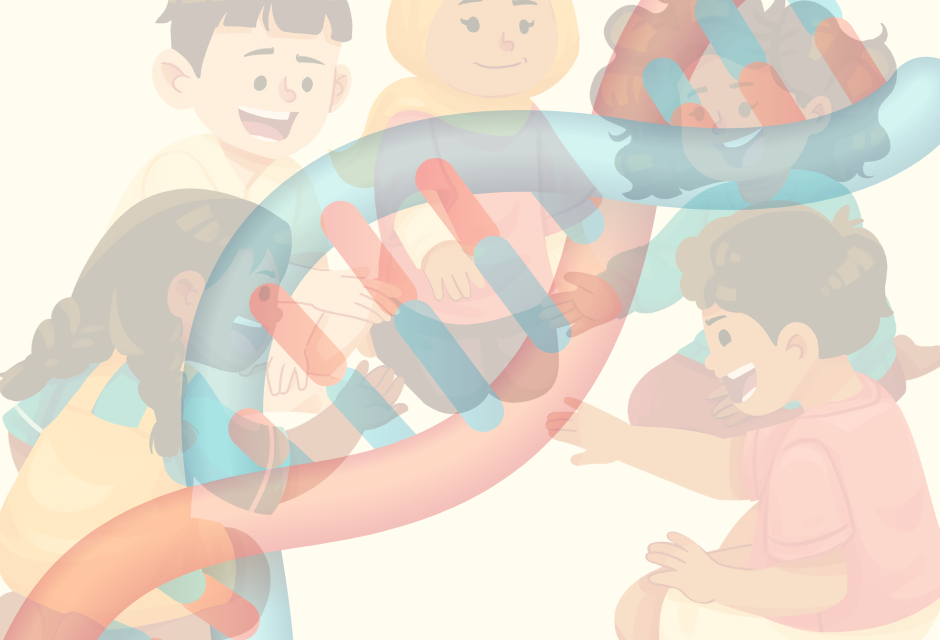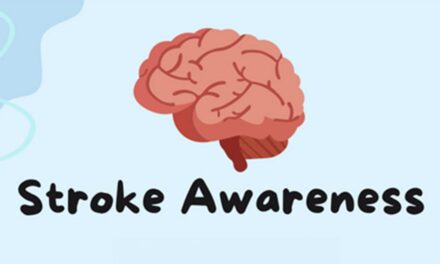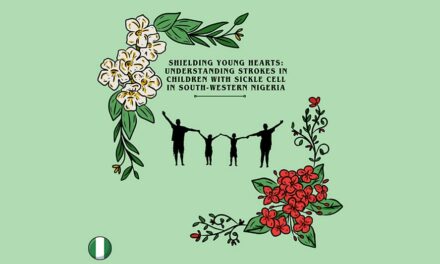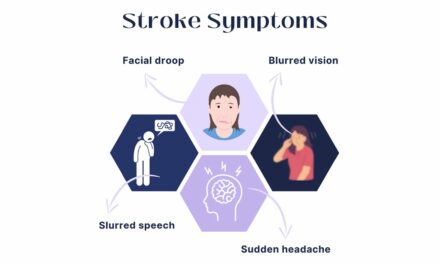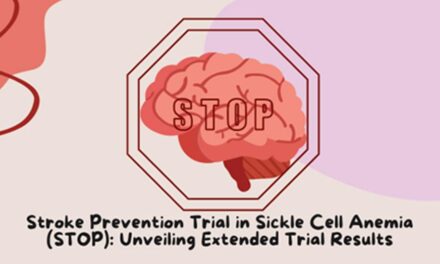Non-traumatic hemorrhagic stroke, which is caused by vascular malformations (abnormal formation of blood vessels in the brain during fetal life), can be hard to recognize in children. When a child has a hemorrhagic stroke (bleeding inside the brain), it might seem like the cause is from trauma or child abuse. Child abuse, trauma which is intentionally done to a child, that results in head injury is called non-accidental head trauma (NAHT). Diagnosing a child with NAHT has a serious effect on the child and the caregivers involved. NAHT should be excluded if the child has a genetic condition that can cause bleeding inside the brain.
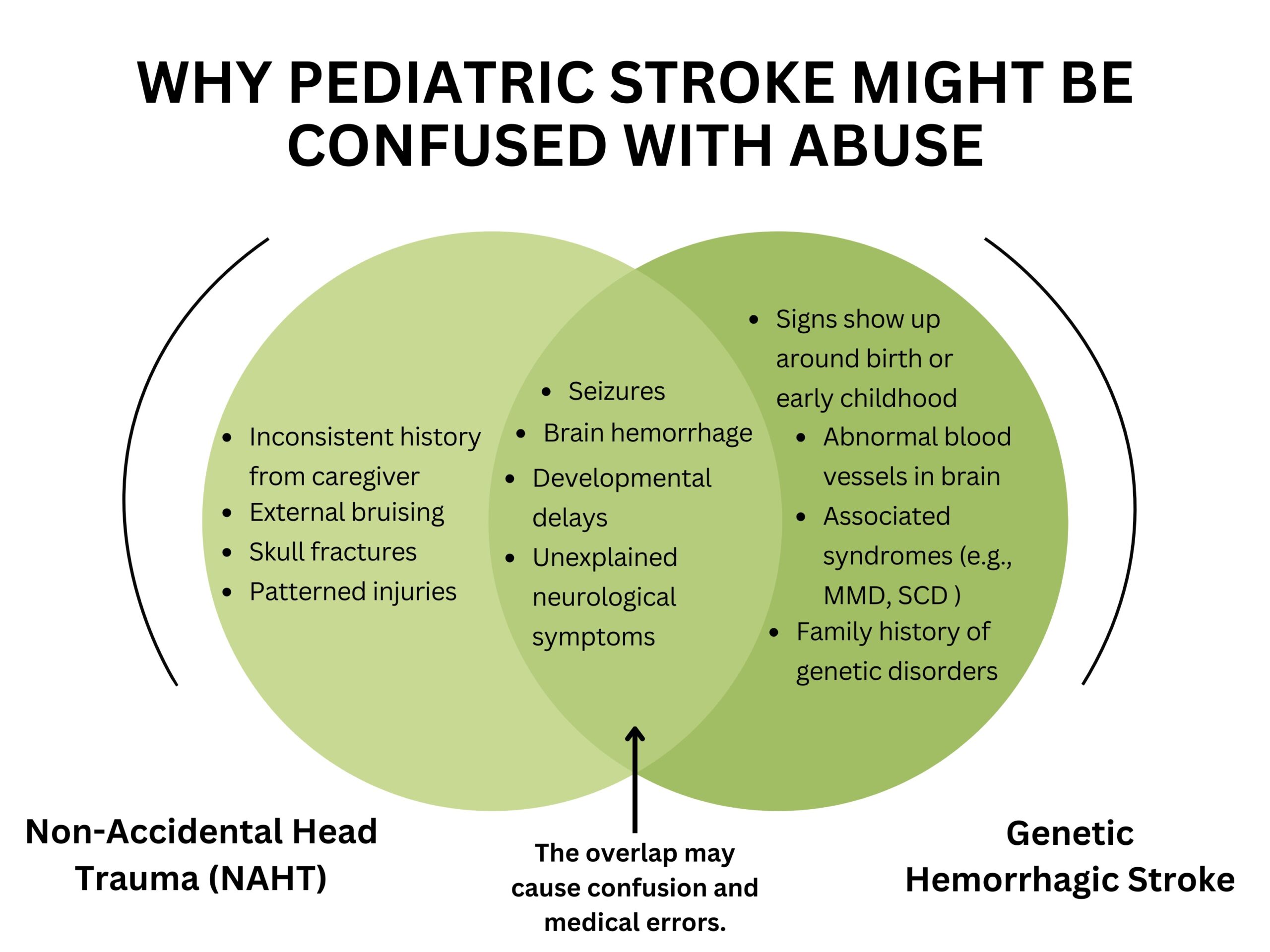
To prevent misdiagnosis, doctors need to work together as a team. They should examine the child’s medical and family history closely, perform a thorough physical examination and order the appropriate tests. However, even then, the symptoms can sometimes be unclear. That is why it’s important to know that some genetic conditions can cause bleeding in the brain, which may look like signs of abuse.
Hemorrhagic strokes that happen around the time a baby is born might be the first sign of a genetic disorder; so, pursuing genetic testing to exclude inherited health problems is very important. Additionally, older children with genetic conditions often exhibit specific patterns of symptoms.
In this review, we will look at a study that describes the genetic causes of hemorrhagic stroke in children that might look like child abuse. The researchers carefully reviewed previous studies, choosing 10 articles that focused on the main genetic diseases that cause stroke, and 11 more papers that looked at children with strokes related to genetic conditions. The conditions they identified included:
- Moyamoya disease (MMD): a rare brain blood vessel disorder that affects blood flow in the brain.
- COL4A1 and COL4A2 gene changes: mutations that weaken blood vessels, increasing the chances of bleeding.
- Ehlers–Danlos syndrome (EDS): a condition that affects the body’s connective tissue, causing easy bruising, tear of blood vessel and bleeding.
- Neurofibromatosis type 1 (Nf1): a disorder that affects nerves, skin, and sometimes the vessels in the brain.
- Sickle cell disease (SCD): a blood disorder that can cause blockage of blood vessels?.
- Cerebral cavernous malformations (CCM): clusters of abnormal blood vessels in the brain.
- Hereditary hemorrhagic telangiectasia (HHT): a condition that causes frequent bleeding, including inside the brain.
- Marfan syndrome: a condition that affects connective tissue and blood vessels.
In summary, this paper provides a helpful list of genetic conditions that can present in children with abuse-like symptoms. Testing for these conditions will help make the correct diagnosis.
Reference to Original:
Treves, B., Sonnini, E., La Russa, R., Del Duca, F., Ghamlouch, A., De Matteis, A., Trignano, C., Marchal, J. A., Carrillo, E., Napoletano, G., & Maiese, A. (2024). Can Hemorrhagic Stroke Genetics Help Forensic Diagnosis in Pediatric Age (<5 Years Old)?. Genes, 15(5), 618. https://doi.org/10.3390/genes15050618
Abstract Translation: Sanjana Sivakumar
Graphics: Sanjana Sivakumar
Medical Editors: Mesha Martinez
Junior Editor: Tess Leong
